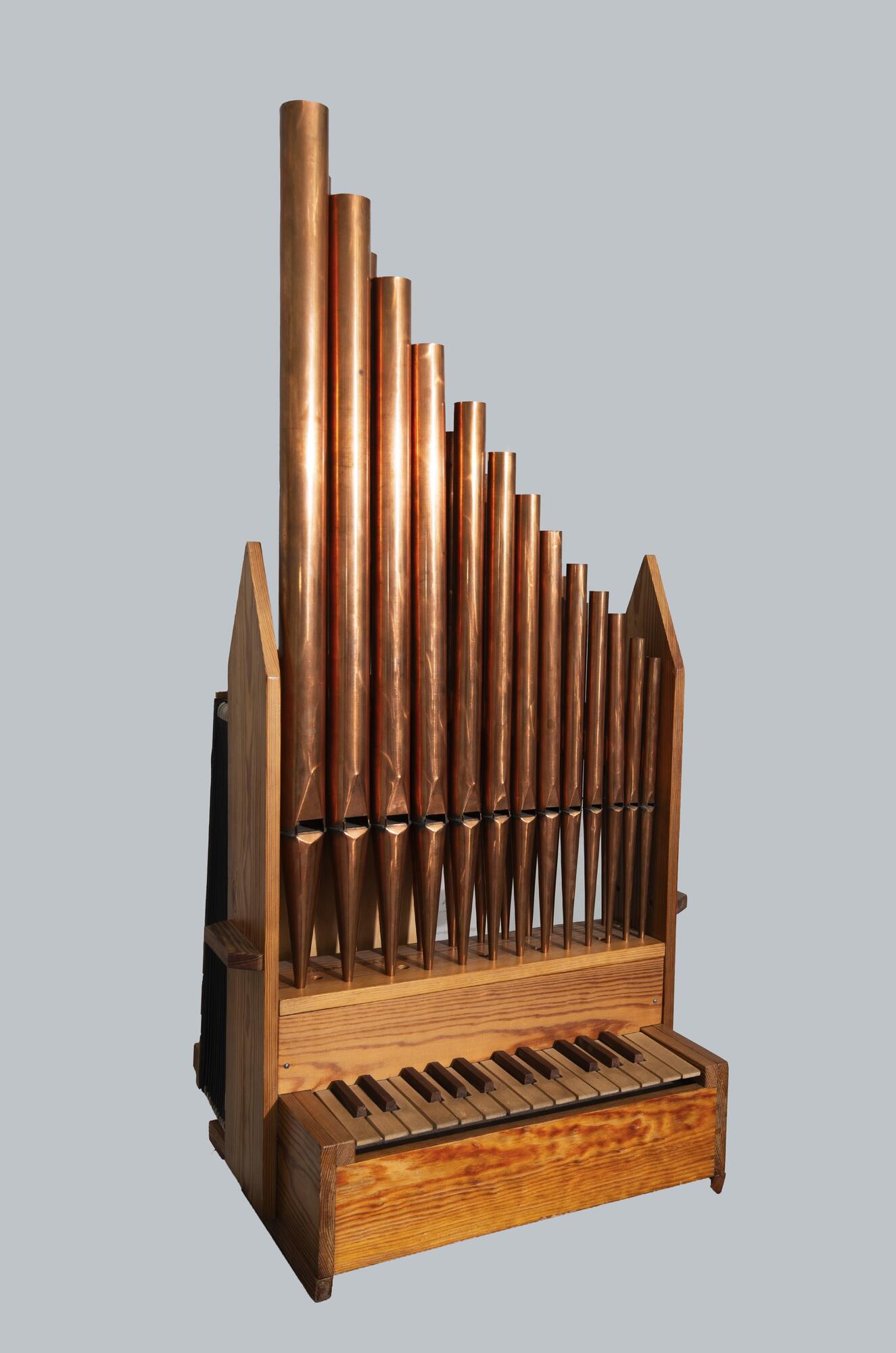The portative organ is a portable aerophone keyboard instrument. In the 12th–15thcenturies, it became widespread in Europe, as evidenced by its first image — a 12th-century bas-relief in the Abbey of Saint-Georges-de-Boscherville near Rouen, France. The organ formed part of the abbey’s musical ensemble. The official name originated from the German “portativ”, from the Latin “porto” meaning “to carry”. It appeared later, as its first mention dates back to 1434.
At the beginning of the Renaissance, portative organs were used both for solo and group performances of secular music. In the 16thand 17thcenturies, thanks to its light and gentle sound suitable for dance music, the portative organ became an attribute of itinerant performers and street musicians.
The displayed organ was rebuilt by the musical instrument maker Yuri Kryachko in 1993 based on the drawings of Western European Renaissance artists.
Yuri Kryachko became interested in designing and manufacturing such instruments in 1980 when he worked as an organist at the Nizhny Novgorod State Conservatory named after Mikhail Glinka. At that time, he created the first prototype that had the size of a suitcase.
In 1990, Yuri Kryachko established an organ manufacturing company and began taking orders. One of the first orders was to install an organ at the Klaipėda School of Arts. The craftsman comments, “There has never been a tradition of organ building in Russia, because Russia is an Orthodox country and… instrumental music in church is… ungodly”. That is why the organ builder considers his profession to be exceptional “in this part of the world” and says that his kindred spirits and teachers are his German colleagues.
The mechanism of this portative includes 25 copper pipes arranged in two rows and a keyboard with a range of two octaves. The performer manipulates the keys with the right hand and the bellows with the left one.
There are no more than three portative organs in Russia.
The displayed instrument was commissioned by Sergei Budkeyev, the founder of
organ culture in Altai and Honored Art Worker of Russia. He has often played
this instrument, including at the White Hall of the museum.






